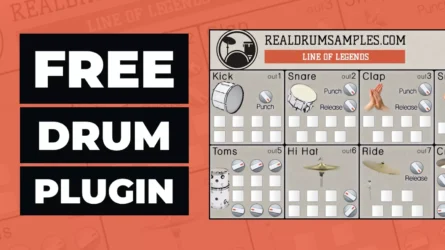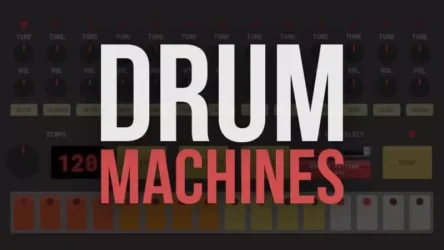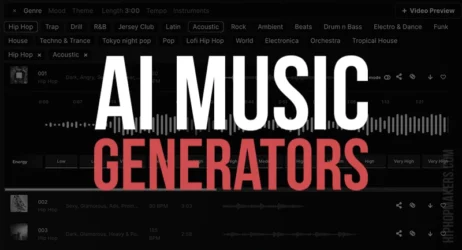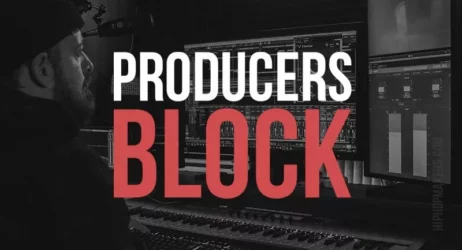This simple guide will answer what is a pitch in music, provide examples, and explain how to identify pitches in music.
What Is Pitch In Music?
Pitch is a term used to describe how high or low sounds are. Vibrations produce all sounds, and when those vibrations are heard at consistent frequencies, the listener perceives them as musical tones. Sounds that don’t have a precise musical tone to them are referred to as having indefinite pitch.
- What is Pitch in Music
- Example of Pitch
- How Do You Identify a Pitch in Music
- Why is Pitch Important in Music
- What Are the 12 Pitches in Music
- Tone vs. Pitch
- Pitch vs. Frequency
- What is the Highest Pitch in Music
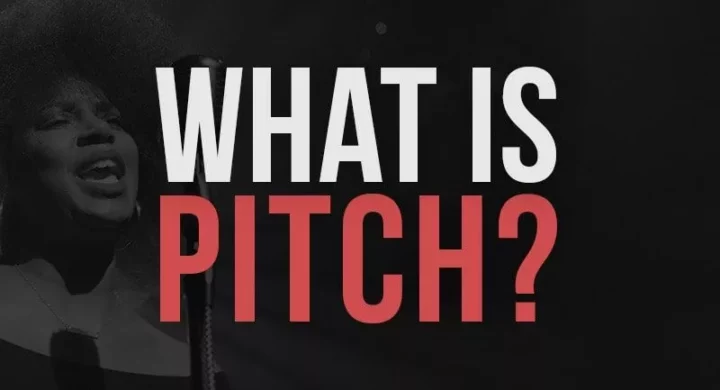
What is Pitch in Music?
In simple words, pitch in music means how high or low a specific note will sound to the listener’s ear. It is one of the most fundamental terms in music.
When a note is played on an instrument, it generates a sound wave. That sound wave is nothing but the vibration of air molecules that go back and forth, thus creating a wave of pressure that travels from the instrument to the listener’s ears.
Now, one of the fundamental properties of a sound wave is its frequency.
By definition, the total number of waves produced in one second is called the frequency of that wave. In simple words, it can be said that the frequency is how fast the cycle of the wave is.
It is important to discuss so much about frequency because pitch and frequency are quite related to each other.
- High Frequency = High Pitch
- Low Frequency = Low Pitch
So pitch basically means how the human ear hears and understands the frequency.
Pitch is the quality that allows us to judge ‘higher’ and ‘lower’ in the sense of musical melodies.
Remember that pitch is each person’s subjective perception of a sound wave. So, it can’t be measured directly. But it doesn’t mean that most people agree which note is high or which note is low.
Actually, the oscillations of a sound wave can be characterized in terms of frequency. Generally, the pitch is associated with and thus quantified in terms of frequency.
So, a high pitch means very rapid oscillations occur, while a low pitch is related to slower oscillations.
What is An Example of Pitch In Music?
To learn more about the tone, it is also essential to have a basic understanding of the tone. A tone is a sound that is sung and played at a specific pitch.
Different voices and different instruments produce different ranges of tones.
For example, women generally tend to have higher voices than men.
So, tones that most women sing are generally higher-pitched compared to the tones most men sing. (Of course, there can be an exception where a man has a high-pitched voice)
It is also essential to consider that physically larger instruments generally tend to produce lower-pitched tones. On the other hand, the smaller instruments typically tend to have higher-pitched tones.
This is because the bigger instruments move more air than the smaller instruments, and more air means a lower musical pitch.
This is because only a small cylindrical flute produces higher-pitched sounds than the big brass tubing of a tuba.
Also, some instruments, such as the piano, produce a broad range of tones compared to other instruments.
How Do You Identify a Pitch in Music?
Since the pitch is how high or how low a specific note sounds to your ears, you need to listen to the note carefully. Pitch is based on the frequency of vibrations of the sound wave. So, If the sound wave vibrations are faster, you are going to get a higher pitch.
If the vibrations are slower, then they are going to sound lower, and thus, you can identify them as lower-pitch sounds.
Tool: Pitch Detector – This tool allows you to determine the pitch of any sound or note quickly.
Why is Pitch Important in Music?
Pitch is important in music because it enables us to judge whether a sound is higher or lower in a sense associated with musical melodies.
What Are the 12 Pitches in Music?
As per the pitch naming scheme, each pitch is named based on the seven characters in the English Alphabet: A, B, C, D, E, F, G.
To better understand the types of pitches, let’s consider the case of the piano. The white keys on a piano are assigned these letters.
The pitch named A produces the lowest frequency of sound, while the pitch named G produces the highest frequency of sound.
There are also black keys in between the white keys on the piano.
Each black key produces a frequency a little bit higher than the white key on their immediate left, but they have a little lower frequency compared to the white key on their immediate right.
White key on the immediate left < Black key < White key on the immediate right
Based on this fact, black keys are also named sharps or flats.
So actually, there are 7 (A, B, C, D, E, F, G) + 5 (flats and equivalent sharps in between) = 12 notes that produce the 12 different types of pitches.
What’s the Difference Between Tone & Pitch?
| Tone: | Pitch: |
| It refers to the quality of sound produced. | It refers to how high or low a sound is produced. |
| It depends on the strength, intensity, pitch, and quality of the music | It depends on the frequency of a voice or instrument |
| It helps in determining the quality of the sound and overall music | It helps in determining the shrillness or frequency of the sound |
What is the Difference Between Pitch & Frequency?
| Pitch | Frequency |
| It tells us about the frequency of the sound. | It tells us how fast the cycle of sound waves is. |
| A pitch can’t be measured since it’s a sensation of the frequency of a sound. | The frequency of sound can be measured. |
What is the Highest Pitch in Music?
In the case of a piano, the pitch “G” is the highest.
A high pitch means the sound wave has a higher frequency of vibration. In a standard musical staff, the higher pitch notes are represented on the treble clef.
If the pitch is quite high, then it will be several ledger lines above the treble clef staff. In a piano or a keyboard, the high pitch notes are found on the right-hand side and are usually played using the right hand.
Whereas the stringed musical instruments are played high on the fingerboard.
Summary of Pitch
Pitch refers to how high or low a note sounds when it is played or sung. Pitch can also refer to how high or low someone says when they speak. For musical instruments, the word “pitch” means the frequency at which it vibrates. When an instrument is tuned to a certain pitch, it will sound when plucked or when blown.
In understanding pitch in music, it’s crucial to recognize the major scale, such as the C major scale, is a series of definite pitches, each with its particular pitch.
This concept is the backbone of music theory, which, when applied to musical instruments, is represented in written music via musical notation.
For instance, middle C, a specific note in the standard music notation, serves as a reference pitch in Western music. Similarly, when plucked, the guitar string produces a pitch measured in terms of the frequency range.
The pitches on a piano keyboard are a perfect illustration of this, from the low-pitch sounds at one end to the high pitches at the other.
In fact, musical pitch, whether it’s a lower pitch or higher pitch, is nothing but a slower or very rapid oscillation of sound waves, respectively. These oscillations create different pitches that human hearing can distinguish, offering such a wide range in music production.
While definite pitch refers to pitches with a specific frequency, like those of a piano or a guitar, some musical instruments, like certain wind instruments, produce what are called indefinite pitches.
These indefinite pitches don’t have a clear, identifiable frequency, hence the name. But even so, they play a vital role in adding richness to the overall melody.
The chromatic scale on the piano, for instance, includes not only the pitches in the C major scale but also the remaining five pitches, giving us a total of 12 different pitches in an octave. The pitch an octave higher has twice the frequency of the original pitch, a fascinating aspect of the relationship between pitch and frequency.
In addition to musical instruments, musical notation plays a significant role in representing pitch. For example, the bass clef and ledger lines on a musical staff denote lower pitches, while higher pitches are often written on the treble clef.
The concept of pitch is closely related to this written aspect of music, a clear indication of the contents of pitch.
However, the concept of pitch is not confined to music theory and music production alone. Some individuals possess what’s known as absolute pitch or perfect pitch, which is the skill to identify or recreate a note without the need for a reference pitch, showing us how deeply embedded and fundamental pitch is in our comprehension of music.
All these terms – from the concert pitch and standard pitch to other pitches – reflect the diversity and complexity of the pitch in music.
Whether we’re talking about the same pitch or different pitches, high or low, definite or indefinite, every pitch adds to the symphony of sounds we call music. In essence, the pitch is the heart of music, dictating everything from the melody and harmony to the emotion and intensity of the musical piece.
I hope you found this information on pitch in music helpful.

